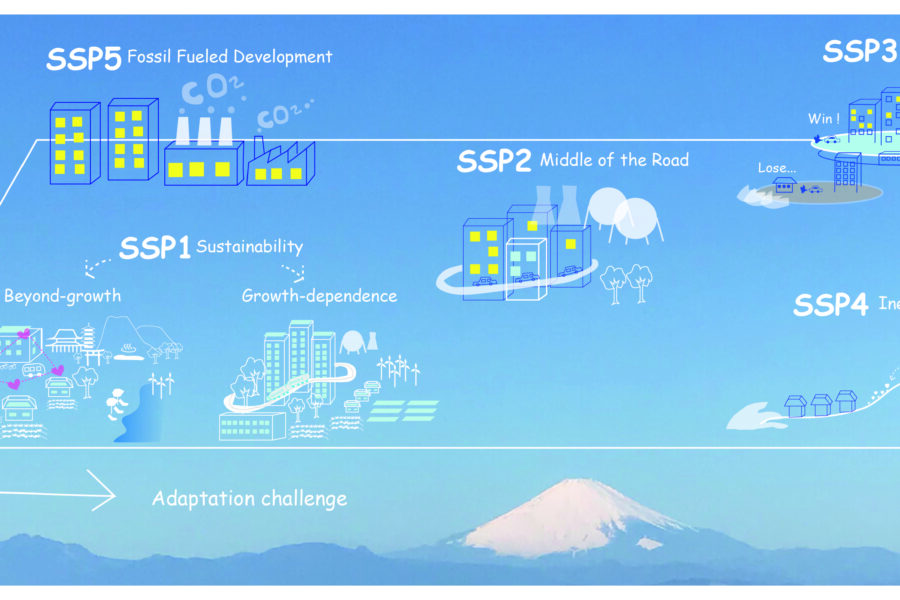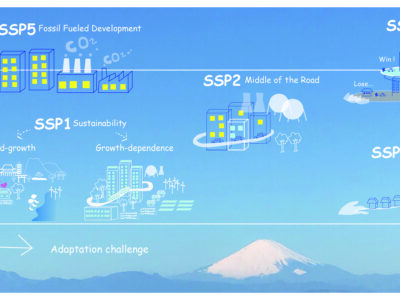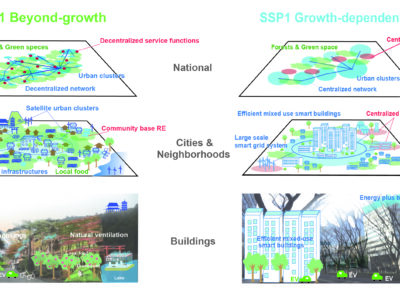The key feature of this study is to develop a comprehensive set of narratives for the built environment in Japan, consistent with the shared socio-economic pathways (SSPs) framework. It focuses on the linkage between sustainability factors and human living environments. We introduce a new, sixth narrative to the SSPs – an alternative interpretation of SSP1. Whereas the original SSP1 assumes high societal and environmental sustainability combined with relatively high economic growth, the SSP1 variant does not rely much on economic growth, but rather it leans towards a lower and more locally-oriented consumption lifestyle. Nature-based solutions are integrated and examined in the new SSP1 narrative.
Expected impact: to contribute to a more integrated policy making processes that consideres a sustainable, long-term future for cities.
The scenarios were made in: 2020
The scenarios look out to: 2050


